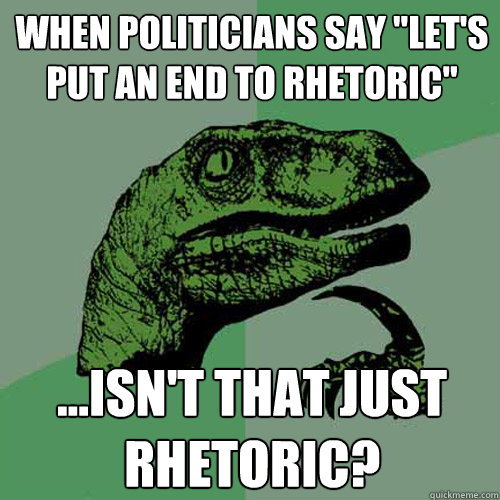I am a creative writing graduate student at Rowan University.yet narrative writing is not my cup of tea. I know that I can knock your socks off with a 50 page analysis paper or scathing editorial, but I also know I would bore you to tears with my long winded meandering melodramatic plot lines.
So it makes perfect sense that I would then sign up to take Writing the Novel as my summer course.
The three weeks between the moment I signed up for the class and actually walking in on the first day I was plagued with tidal waves of self-doubt.
I even had a nightmares about walking into a room full of aspiring Steven Kings and Maya Angelous, all of whom would laugh openly when I read lines of my novel out loud.
However, on that first night of class, heart pounding, palms sweating up the edges of my notebook, I learned that I would be assessed on a final portfolio and not just my final draft.
I felt the weight of my own self-doubt float away.
I knew I could research, brainstorm, reflect, and edit like a pro so there was no need to fear. I could have the best/worst novel possible and still get an A in the class.
And then it hit me: why don't I use portfolios like this in my classes?
Currently my district's English curriculum mandates that we give one test weighted writing assignment a marking period. Normally the nature of this assignment is dictated to us (something I am not particularly pleased with). The students know it's coming and they dread it. They wait for the topic sheets and graphic organizers, pages of teacher comments in red ink on their one rough draft, and a final draft that bores you to tears.
The writing is weak, lifeless, and banal.
But why? Can't we do better?
Can't we make them think about their choices and not just hand it to them in a neat little graphic organizer. Yell out: Here, students, a worksheet with some boxes, fill it in. Here, students, your rough draft with comments you won't look at anyway. Here students, get all stressed out about this final draft that is just as terrible as your first.
So this year I took the leap. I switched all of my writing assignments to portfolio assessments. I am two marking periods in and looking back, I know I made the right choice. It has been a hard transition for the students who are so used to having the teacher think for them. I am often met with some cranky customers who don't want to hear me say "I don't know. What do you think?" one more time.
I know there are whole books dedicated to the topic of portfolios in the secondary classroom. However, I still want to share my plans and maybe they can help you take that one fearless jump to portfolio assessment.
Writing Portfolios To Save the Day
The context: I used this in my Western Studies class - a double period class of honors level 11th graders. I team teach this 46 student class with a history teacher. I also used this in my 12th grade Accelerated level class and Creative Writing class. Creative writing is comprised of mostly 11th and 12 grade students from lower level English classes.
Day 1: Introduction I show my students this
youtube video on the creative process. It's a useful video because it moves quickly, shows the portfolio process, and is created by a real person who writes for a living. From that point, we talked about what students normally do during their writing process that contrasts what the video described. Normally the students say the same types of things I already mentioned: no topic choice, cut and paste outline, one draft, and little edits before final draft.
At this point, I break out the assignment sheet that I linked above and we go over the different aspects of the portfolio. I also pass around a sample portfolio that gives the students something tangible to look at while we review the instructions.
Day 2: Topic intro and Idea generation - I give the students the topic. Often I don't get much say in this as it is outlined in my curriculum, but sometimes I do get some wiggle room. I like to show students youtube clips, images, art work, news paper articles or any other concrete material to help them get a better grasp of the topic. If I have a completed paper on the same topic we might review that as a class. We will discuss ideas related to the topic and take notes. I consider this day to be a time for students to get their feet firmly planted on the topic - if the ground work is shaky, they are going to fall before the paper even gets going.
Day 3 Outlining - I firmly believe that graphic organizers come from the devil. Teachers were flooded with these things over the years and all they have taught our students how to do is fill in boxes. They don't understand how or why to structure their writing in any particular way or even how to group their ideas if there is no boxes to guide them. I normally start by asking the students to free-write on the topic for five minutes and share their ideas with a partner. From there we underline and star good ideas and then we share as a class. After that, we discuss different ways to brainstorm that information - some students opt for a web while other set up their pages in columns. At the end of the period I have the students write a short reflection on their choices. (I have a format for reflections which I will link at the bottom of this post). Outline will be due the next day
Day 4: Group time with outline - I set the students up in groups of 4 and they swap outlines. I give them a guided comment sheet to complete (linked at the bottom). At the end of the period, we discuss some outlines that worked and why that might have been. Homework is to use outline to write the intro in their note books.
Days 4-6 Writing Workshop - Here I focus on only 2 or 3 skills I want the students to master during this writing assignment. For example, I just finished an analysis essay portfolio unit with my 12th graders and I focused on topic sentences (ahhhhhh, why don't they get these right!!!!), transitions, and embedding quotes. Each day I introduced the skill and showed an example for 10 minutes and the rest of the period the students completed a writing activity in their note books connected to their topic using the skill. I would conference with students during this time and they would help each other. It is important to mention to them that workshop writing is part of the writing process and should appear in their portfolios. Sometimes I will get students who think they can opt out of workshop time to gaze out of the window or at the back of that pretty girl's head.I also want to say that it is very tempting to want to cover 15 skills at the same time, but don't, only focus on covering only these few and do them well. There will be time for MLA format and dangling modifiers - I promise. Homework is to complete rough draft.
Day 7: Self-Edit day- Students use the self edit sheet (linked at the bottom) to edit their papers. I let them help each other and I will float around and help explain the self-edit directions to them. It is important to stress how the rough draft with their self-edit comments are also part of the drafting process and should be included in their portfolio. Homework is to use edits to fix saved drafts and print out a new 2nd draft.
Day 8-9; Peer editing - Students can use their new 2nd draft or their first draft to complete peer edits. I normally do something called shepherding as a means of peer editing, but you can do whatever method you like. Homework: Complete a reflection on peer editing
Day 10:
Writing introduction letter to their portfolio - I give the students really clear instructions on how to set up the portfolio introduction letter and we write it together in class. Homework: Use peer edits to edit your draft for a final draft.
Day 11: Portfolio Organization day - I let the students use this time to organize their portfolios. We use binders with colored paper to break up the different sections (notes and brainstorming, editing and revising, reflecting, and final draft and I have them complete a final checklist.
Day 12: Students share their work: I think it is really important to have students swap portfolios, read each others work, see each other's process and participate in a teacher lead discussion about what everyone learned during the unit.
I like to stress that the only place you hide mistake is in the final draft - all the mistakes along the way are there to teach you something. We take this time to discuss those mistakes.









